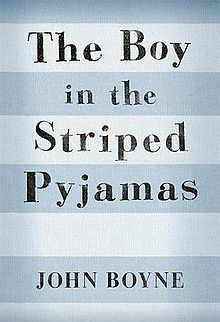 I assigned this book for my literature and creative writing class at the co-op, and I’m so glad I did because it provided a space for wonderful, in-depth conversation about history and human nature. Though many of my students had heard the word “Holocaust,” they had neither the insight nor application to wrap their brains about what really happened.
I assigned this book for my literature and creative writing class at the co-op, and I’m so glad I did because it provided a space for wonderful, in-depth conversation about history and human nature. Though many of my students had heard the word “Holocaust,” they had neither the insight nor application to wrap their brains about what really happened.
First, The Boy in the Striped Pajamas is a fable, and it’s important to know that because the likelihood of this story is slim to none.
Bruno is nine years old and son of a German Commandant in Hitler’s army in 1943. His life is upended when his father announces to the family that they are leaving Berlin for a special assignment in a place called Out-With (nine-year-old Bruno does not understand this to mean Auschwitz). He is heartbroken because this move means he’s leaving his best friends, his grandparents, and the home he so dearly loved. Cast into the wilderness, Bruno and his family move to a smaller house (only three stories instead of five) and from his new bedroom he sees a camp of sorts. There are people in the distance, and from the looks of it, they are all wearing the same clothes – striped pajamas.
In an attempt to make his new life at Out-With tolerable, Bruno disobeys the rules to stay close to the house and goes on an expedition to explore the grounds. In doing so he meets Shmuel, another nine-year-old boy, who lives on the inside of the fence. Over time the two become secret friends. Though Bruno doesn’t know why Shmuel is inside the fence and he is outside, he knows this new friend is worthy of time and friendship. Little does he know where this friendship will take him.
The fable is written to provoke thought, not to paint an accurate picture of what went on at Auschwitz. That’s what it provided my class. In addition to highlighting several literary devices, it was a way to show how words and stories can be powerful.
The Boy in the Striped Pajamas is a troubling read, but I highly recommend it for middle schools and beyond.
